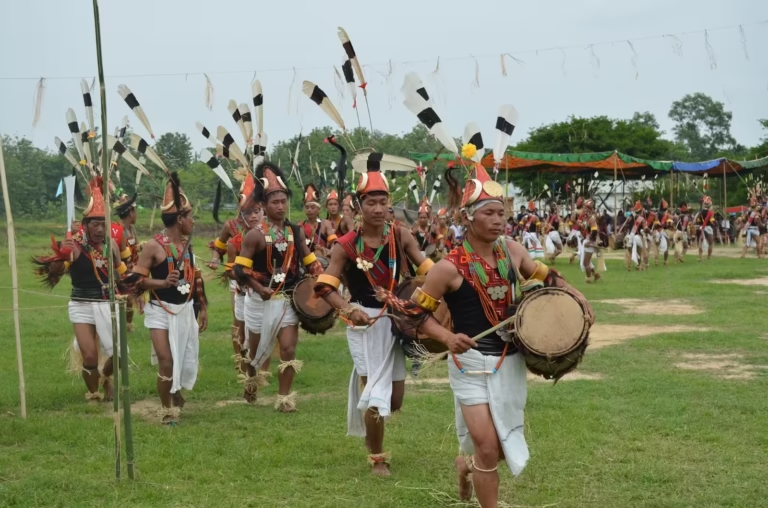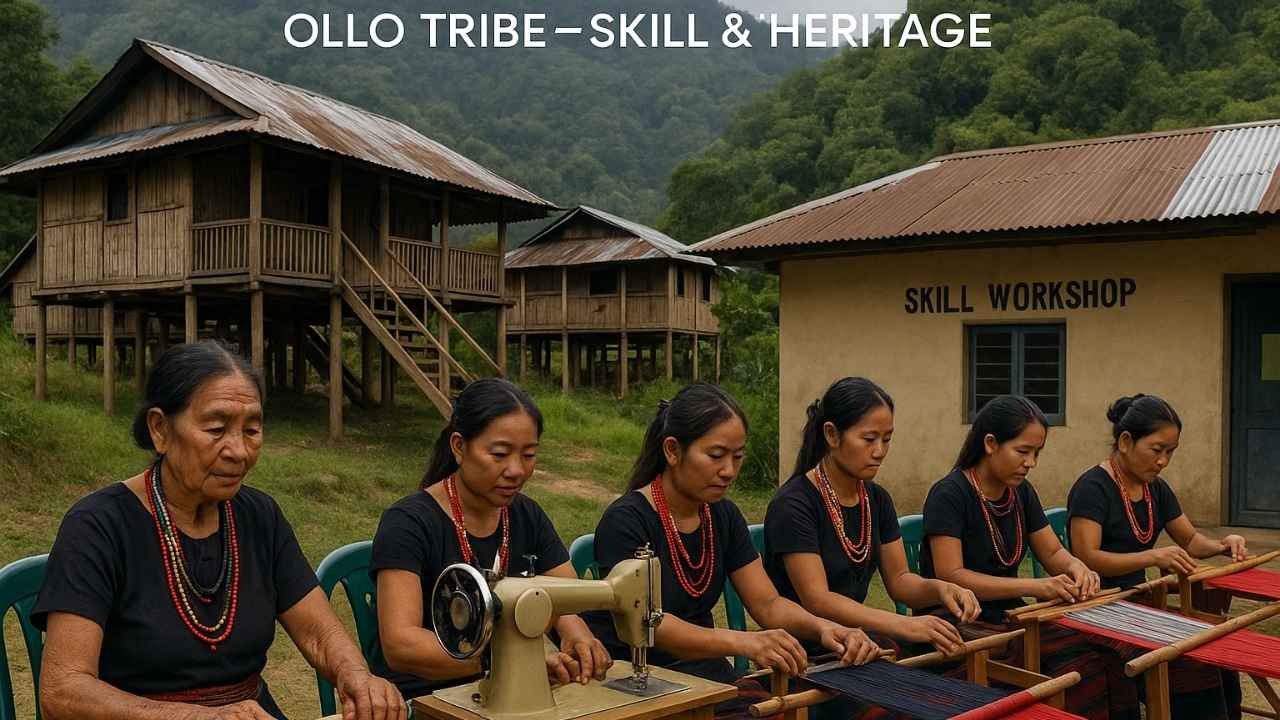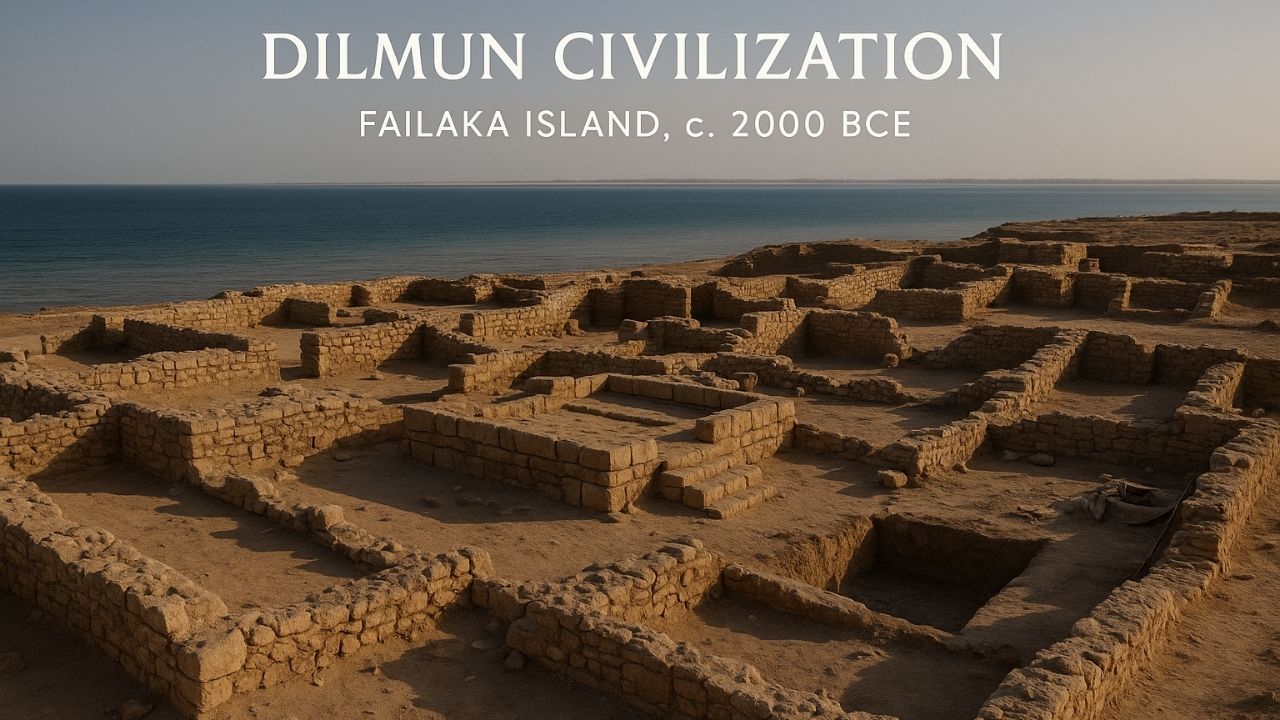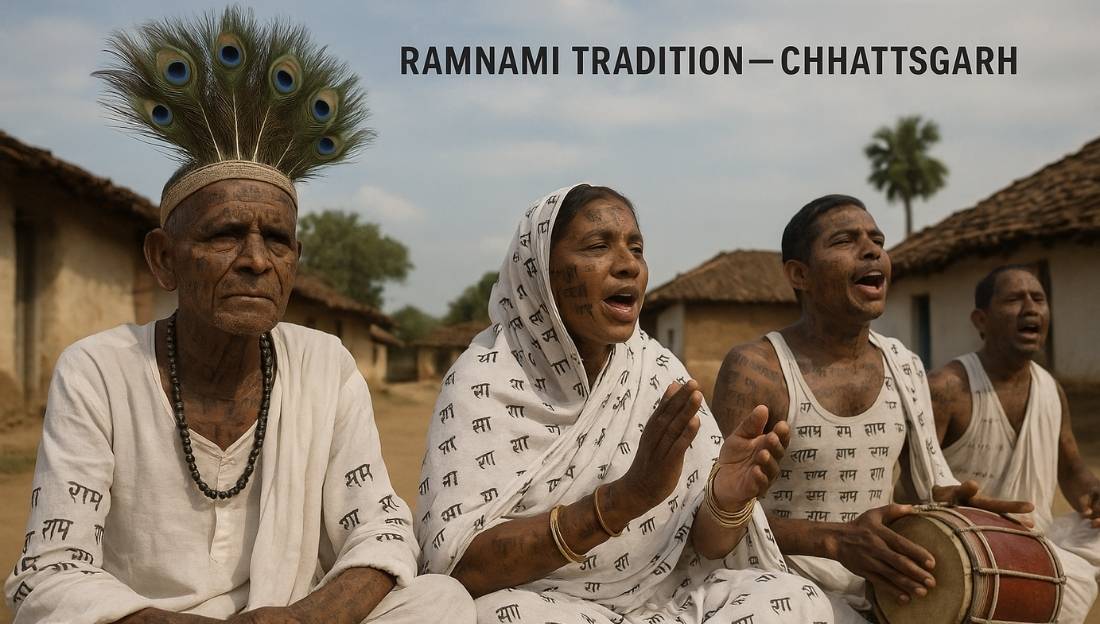The Khonsa Battalion of the Assam Rifles has started a skill development and empowerment programme for women of the Ollo Tribe in Arunachal Pradesh under Operation Sadbhavana, aiming to boost self-reliance and inclusive growth.
Ollo Tribe
- The Ollo Tribe, also known as Oloh or Lazu Naga, is an indigenous Naga community primarily found in the Laju Circle of Tirap district, Arunachal Pradesh, and across the border in Myanmar.
- Despite living in two countries, they maintain close cultural and familial ties.

Geographical Distribution
- Location: Predominantly in the Tirap district of Arunachal Pradesh.
- Cross-border Presence: Many Ollo families live across the India-Myanmar border, preserving strong kinship and cultural bonds.
Cultural Characteristics
- Language and Customs: The Ollo people speak a common dialect and share similar customs and religious practices on both sides of the border. Their traditions emphasize community life, respect for elders, and clan unity.
- Social Structure: The community follows a clan-based social system with hereditary chieftainship. Ollo society is patriarchal, with leadership and property inheritance typically passing through the male line.
- Cultural Heritage: Traditionally, they were known for distinctive facial tattoos and a head-hunting culture—a practice now long discontinued.
Housing and Lifestyle
- Ollo homes are usually built on stilts, reflecting adaptation to hilly terrain.
- The chief’s residence is larger and sturdier, often built with carved wooden pillars and decorative motifs symbolising power and prestige.
Population
- According to the 2011 Census, the Ollo Tribe population in India stands at around 1,500 individuals, making it one of the smallest tribal groups in the country.
Development and Challenges
- Despite limited numbers, the tribe is increasingly participating in education, entrepreneurship, and skill training initiatives.
- The Assam Rifles’ project under Operation Sadbhavana focuses on women’s skill development, promoting self-employment and financial independence.
- However, challenges such as limited infrastructure, poor connectivity, and border-related isolation continue to affect development.
Significance
- The Ollo tribe represents India’s rich ethnic and cultural diversity.
- Their inclusion in skill and livelihood programs strengthens the vision of inclusive growth and helps preserve traditional identity alongside modernization.
Conclusion
The Ollo Tribe stands as a symbol of cultural continuity amidst modern change. Ongoing welfare and empowerment programs are helping this small community bridge the gap between tradition and progress.
This topic is available in detail on our main website.





